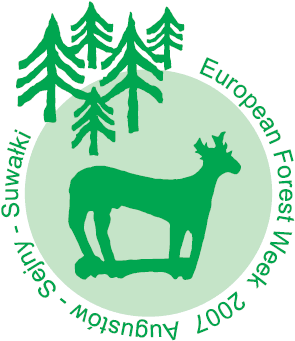|
LESSON PLAN PROPOSAL
Theme: Air Pollution: Ozone Hole and Greenhouse Effect
Educational aims:
1. Introductory Part Teacher introduces the title of the presentation and conducts a short discussion whose aim is revision of the information concerning air pollution and its influence on the environment.
2. The Main Part Teacher introduces as a slide show: - the definition of the "ozone hole" W atmosferze ziemskiej na wysokości od 10 do 50 km występuje warstwa o podwyższonej koncentracji ozonu (03) ozonosfera. Maksymalne stężenie ozonu utrzymuje się na wysokości ok. 23 km. Od końca lat 70. XX w. obserwuje się znaczny spadek koncentracji ozonu, szczególnie nad Antarktydą w rejonie bieguna południowego. Zmniejszenie koncentracji ozonu w ozonosferze jest nazywane dziurą ozonową. - proces powstawania zjawiska dziury ozonowej In the atmosphere at the altitude of 10 to 50 km appears the layer of air with a higher concentration of ozone (03) - the ozonosphere. The maximum ozone level remains high at the altitude of ca. 23 km. From the late 70s of the 20th century, there has been observed a dramatic depletion in the concentration of ozone, especially over Antarctica in the area of the South Pole. The reduction of the concentration of ozone in the ozonosphere is called the ozone hole. the process of the generation of the phenomenon of the ozone hole The ozone hole comes into being as a consequence of the depletion of the ozone layer caused by the chemical compounds called freons (CFC gases). Under the influence of the ultraviolet radiation freons undergo the process of photodissociation as a result of which are released atoms of chlorine. The chlorine reacts with ozone creating an equally active chlorine oxide (ClO) and common oxygen (02). Then the reaction of two particles of the chlorine oxide leads to the creation of a particle of the chlorine dioxide (C102) and release of another atom of chlorine which splits other particles of ozone. Moreover, the chlorine dioxide may undergo further break-up into an atom of chlorine and a diatomic particle of oxygen. The chemical reactions taking part in the process of the break-up of ozone look as follows: CnClxFy---> CnFy+xCl Cl+03 ---> Cl0+02 2Cl0 ---> Cl02+Cl Cl02 ---> Cl+02
- consequences of the formation of the ozone hole The deterioration of the ozone layer leads to a reduction of the efficiency of absorption of UV rays. As a result, living organisms become subjected to amplified doses of the ultra-violet radiation. The excess of UV rays can bring about the disturbance of the equilibrium of whole ecosystems. The ultraviolet radiation penetrates water several metres deep (in the case of clean waters even to a dozen or so metres). This causes a decay of the particularly sensitive vegetable and animal organisms forming the plankton. Consequences are visible in the next link of the trophic chain: depletion of the number of fish feeding on plankton as well as predatory fish. The ultraviolet radiation exerts also a negative influence on plants. Among the plants which react to UV over two thirds show high sensitivity in this respect. One ought to bear in mind that we mean here mostly the plants in agricultural or industrial cultivation. An increase of the intensity of the ultraviolet radiation on the Earth will be reflected in the human economy. A decrease of the number of population of fish, the result of the disappearance of plankton, will bring for a given area considerably smaller yields in fishing. And not only will fishing and fishery suffer. The destructive influence of the UV rays on the chlorophyll of the cultivated plants (e.g. cereals) will diminish crops, harming agriculture. The ultraviolet radiation can negatively bear on people. Human beings by producing the skin pigment only to a small extent are able to protect themselves. The excessive UV radiation can weaken the human immunological system and consequently diminish resistance to infections and diseases. Among the diseases the most sinister are the cancerous diseases, especially skin cancer (e.g. melanoma). Moreover, the ultraviolet radiation causes the irritation of the conjunctivae, and through this contributes to numerous oculopathies, mostly cataracts. The UV rays cause also acceleration of the ageing processes of the skin. If freons and other gases destructive to ozone continue to be emitted into the natural environment, the ozone hole will expand considerably its size and soon appear all over the globe. Then, we shall deal with not only the ozone hole, but a complete disappearance of ozone in the atmosphere. - assumptions of the protection of the ozone layer Concrete actions aimed at prohibiting the depletion of the ozone layer round the earth were first undertaken only in 1982, when Doctor Joe Farman discovered a complete disappearance of the ozone layer in the atmosphere over Western Antarctica. In 1987, with the aim of protecting the ozone layer, on the initiative of the UNEP (the United Nations Environment Protection Programme), 31 states (including Poland) signed the Montreal Protocol. It assumed a 50% reduction of the CFC-gases production by 2000 considering the level of production for 1986. From 1990, there has been, really, observed a slowdown in the growth of the volume of CFC-gases in the atmosphere from 5% a year to less than 3%. Moreover, on 11 October 1990 Poland became a member of the Vienna Convention concerning the protection of the ozone-layer, according to which forbidden become the production of CFC-gases and import of cooling devices containing CFC gases. In the production of cosmetics and deodorants the use of CFC gases has been practically discontinued, as they become replaced by other, harmless to environment gases -propane and butane. These cosmetics are marked then as "CFC-free" or "ozone friendly". Also modern refrigerators and freezers are CFC-free devices. Teacher presents to the students a worksheet metaplan: How to prevent the formation of the ozone hole? (Worksheet 1). Students, working in groups, construct a metaplan. - the definition of the phenomenon of the "greenhouse effect" The greenhouse effect occurs due to the ability of the atmosphere to allow through a large part of the solar radiation (mostly light) and retention of the radiation of the Earth (e.g. its thermal radiation). Thanks to this the Earth's surface and the lower strata of its atmosphere are warmer than if there was no atmosphere. Scientists have calculated that the temperature of the Earth's surface devoid of the atmosphere would reach ca. -17°C, while at present an average temperature on the Earth reaches +15 °C. The greenhouse effect is a natural phenomenon and a very beneficial one, without it life on earth would not develop. The problem is not the greenhouse effect as such, but changes in its intensity. The intensification of the greenhouse effect means for the planet a temperature rise caused by an increased concentration of the carbon dioxide and other gases opaque to the infrared radiation the so called greenhouse-gases. It is one of the negative results of the contamination of the natural environment. - the phenomenon of the generation of the greenhouse effect The greenhouse effect consists in the retention in the atmosphere of larger quantities of the infrared radiation which leads to the warming up of the Earth. It is supposed that it is a result of a change of the content of the gases in the air, especially a sharp increase of the concentration of the carbon dioxide. Forecasts suggest that if the present rate of the combustion of mineral fuels continues, it will result, within 40-45 years, in their saturation in the atmosphere causing an average increase of the temperature of the surface of the Earth by about 1.5 - 4.5°C. - consequences of the progress of the greenhouse effect:
- methods of counteracting the progress of the greenhouse effect: One method to prevent the negative change is reduction of the emission of greenhouse gases: - water vapour H20, - carbon dioxide CO2, - nitrogen suboxide N20, - methane CH4, - ozone 03, - CFC-gases and other. Students list the consequences of the progressive phenomena of the greenhouse effect. (Worksheet 2).
Literature Hafner M., 2000, „Księga ekotestów do pracy w domu i w szkole", Warszawa, PKE. Pyłka-Gutowska E., 1998, „Ekologia z ochroną środowiska", Warszawa, WSiP. Tuszyńska L., 2006, „Edukacja ekologiczna dla nauczycieli i studentów", Warszawa, Wyd. WSP TWP
Tasks
Task 1.
METAPLAN How to prevent to the formation of the ozone hole?
Why is it not now the way it should be? What can be done to prevent to the formation of the ozone hole?
...........................................................................................................................................
...........................................................................................................................................
...........................................................................................................................................
...........................................................................................................................................
...........................................................................................................................................
Task 2. List 5 examples of preventing the intensification of the greenhouse effect.
...........................................................................................................................................
...........................................................................................................................................
...........................................................................................................................................
...........................................................................................................................................
...........................................................................................................................................
Partners:
Forum Samorządowe Pojezierza Suwalsko -Augustowskiego i Ziemi Sejneńskiej, Regionalna Dyrekcja Lasów Państwowych w Białymstoku
It was financed from funds:
Kuratorium Oświaty w Białymstoku Wojewódzkiego Funduszu Ochrony Środowiska i Gospodarki Wodnej w Białymstoku Forum Samorządowego Pojezierza Suwalsko -Augustowskiego i Ziemi Sejneńskiej
Autorzy:
Text: M. Ambrosiewicz (WNP), J. Górecka (WNP), E. Perkowska (WNP), Z. Szkiruć (Association KSOP ZPP), S. Yamulki (Environmental and Human Sciences Division Forest Research, http://www.forestresearch.gov.uk/researchforest) Translation: E. Perkowska, Z. Dudek Concept and choice of illustrations: M. Ambrosiewicz, J. Górecka Photographs: J. Borejszo, J. Oroza, W. Misiukiewicz Online version: KAJA Janina Elżbieta Kamińska jmka@su.onet.pl
|


